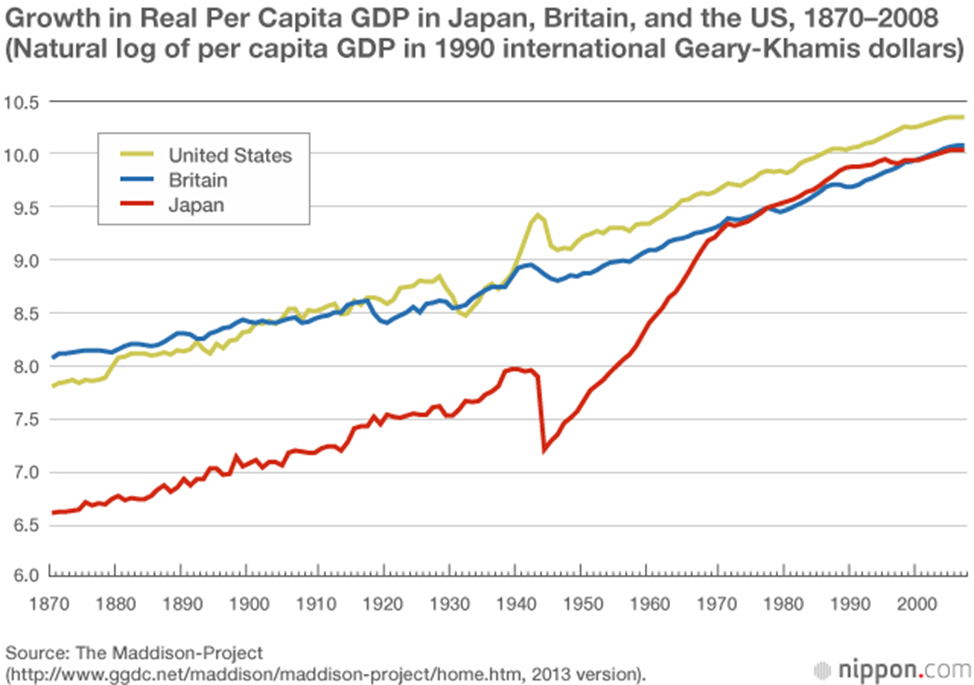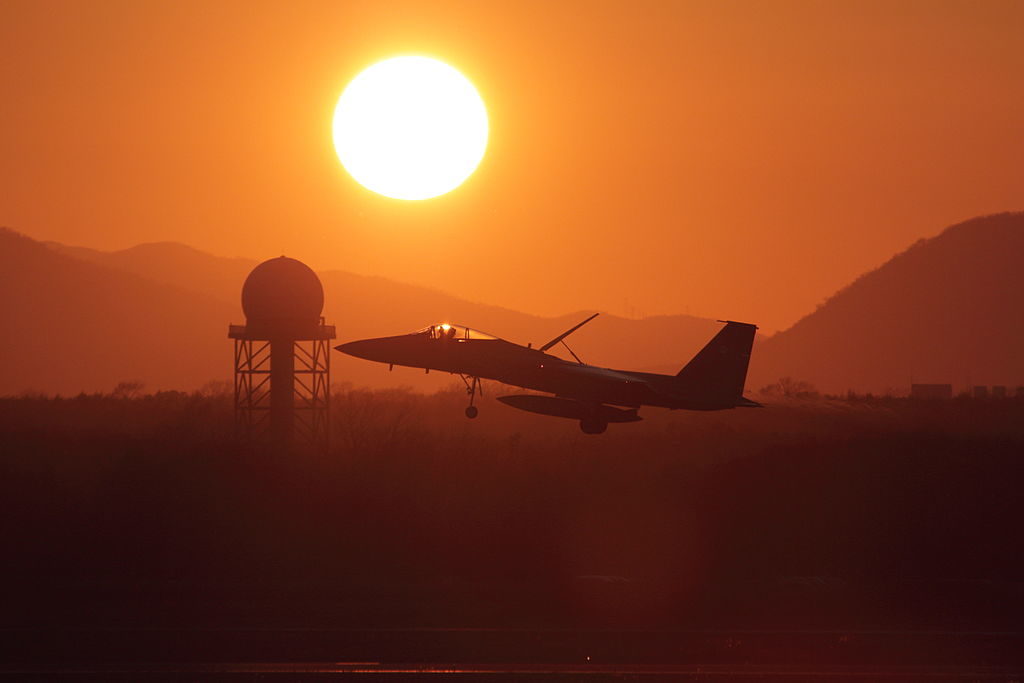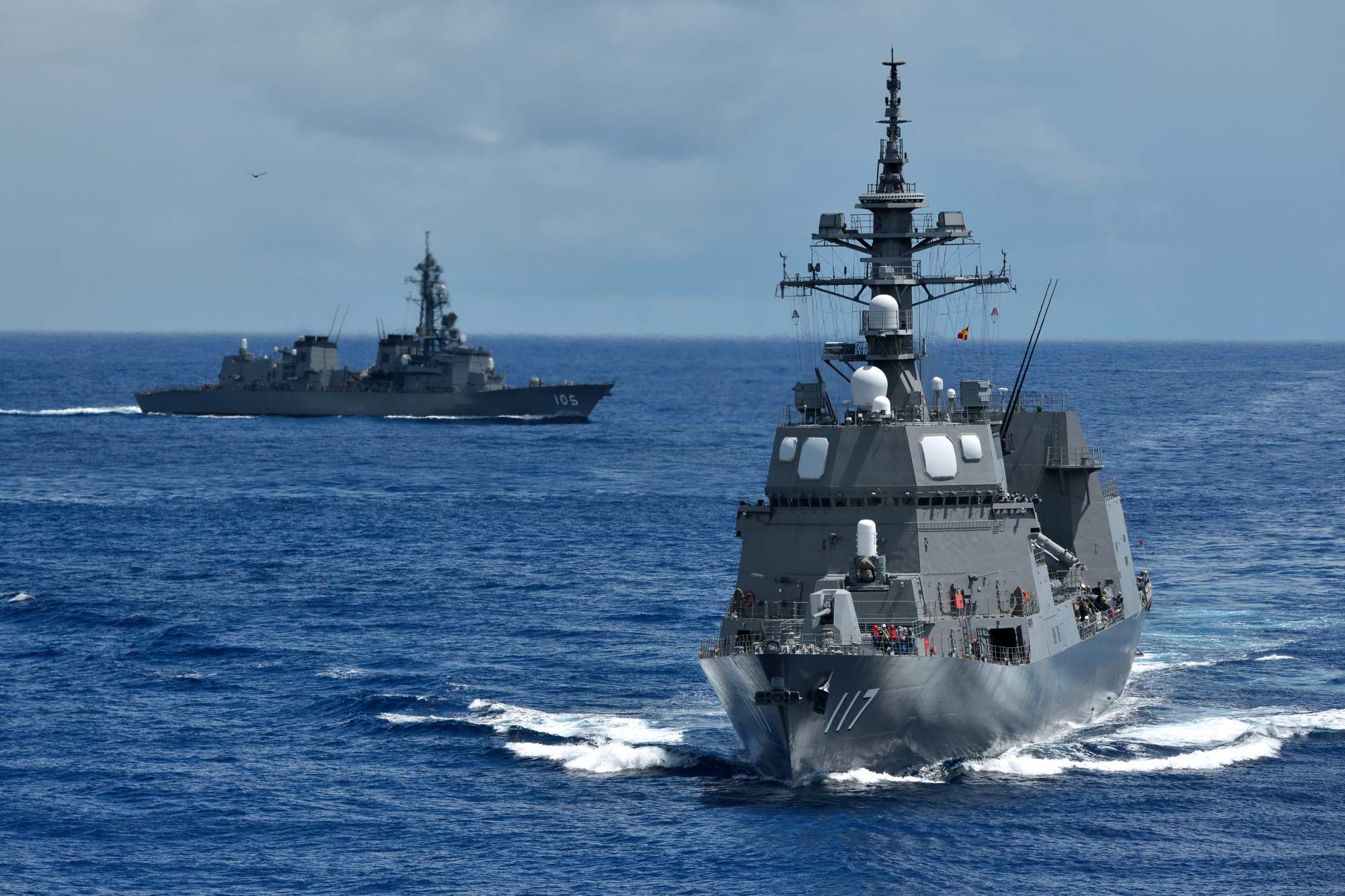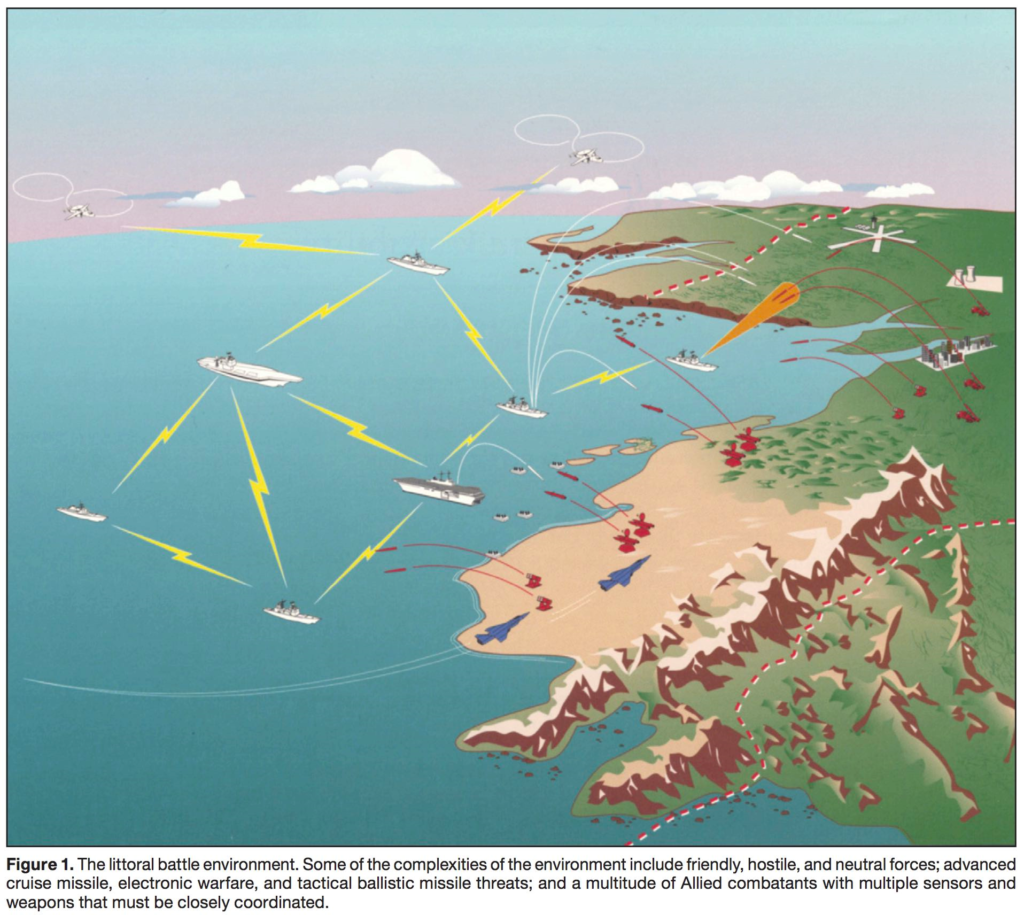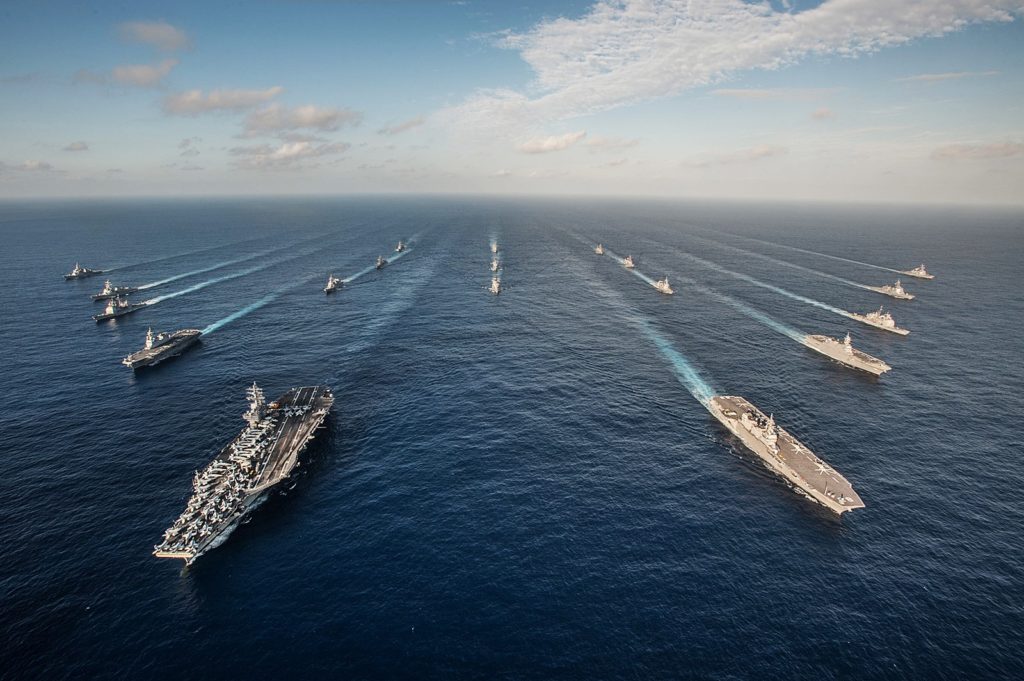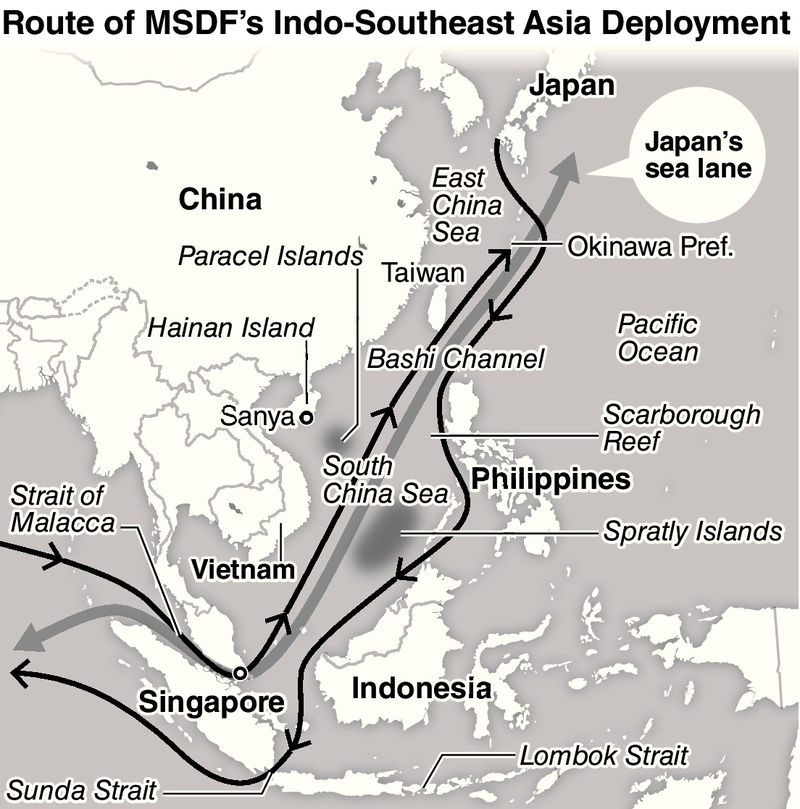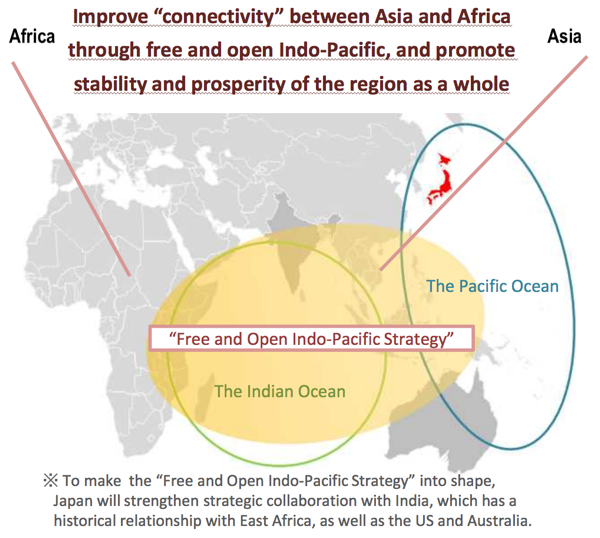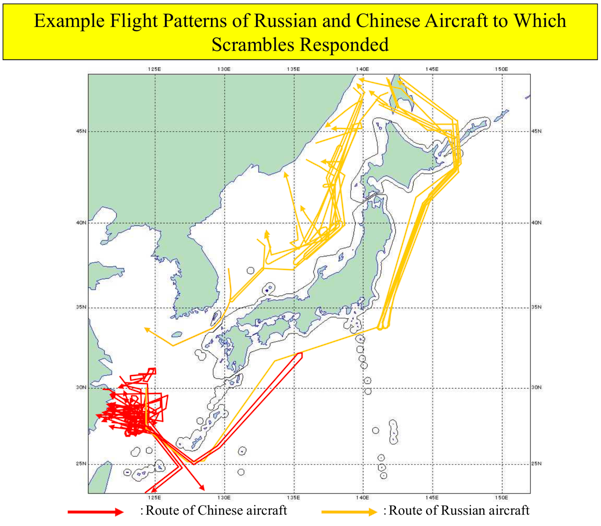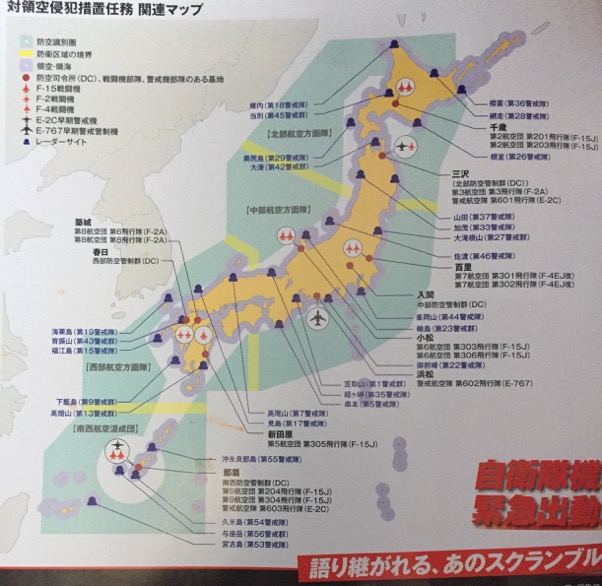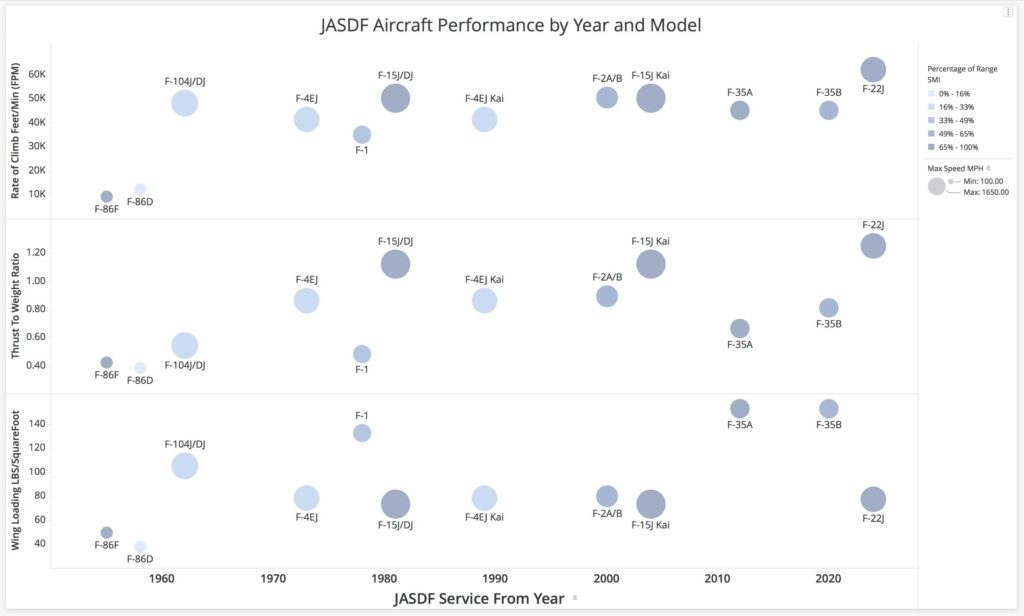
In my previous posts, I explored impact the political aftermath of the Pacific War on Japan and the gradual restoration of sovereignty had on its air power policy. During this time, aircraft and air defense technology changed rapidly and the roles and mission of the Japanese Air Self Defense Force (JASDF) evolved rapidly as well.
The JASDF has been closely tied to the U.S. Air Force (USAF) since its inception. This was true in terms of missions, doctrine, technology and equipment. The primary role of the JASDF has been air defense and the protection of Japanese sovereignty (Defensive Counter Air, DCA), since 1958 when this mission was transitioned back from the USAF. The 1978 National Defense Program Guidelines (NDPG) mandated this, and also prohibited mid-air refueling and precision-strike munitions. These missions were gradually permitted as the threat environment evolved. (See this thesis for a good summary.)
The role of offensive air power (i.e. Offensive Counter Air or OCA; attacking enemy airbases, missile launch sites and similar military facilities) has traditionally been reserved for the USAF due to legal limits on the possible missions by the JASDF. Specifically the U.S. Armed Forces, Japan, 5th Air Force is a considerable force, including the 18th Wing at Kadena, Okinawa with four squadrons of F-15s, and the 35th Wing at Misawa in Northern Japan with four squadrons of F-16s, among other support squadrons to tankers, AWACs, etc.
This posture and division of responsibilities between the JSADF and USAF has gradually changed over time, or “emerging as it really is”:
- In the early 1980’s, the F-1 attack aircraft had a strike capability against shipping with the ASM-1 and ASM-2 missiles.
- In the late 1990’s, the F-4EJ upgraded “Kai” version added ground attack and the ability to strike with the ASM-1 and ASM-2 missiles.
- In the early 2000’s, the F-2 aircraft was introduced, with ground attack with precision-guided munitions and the ability to strike with the ASM-2.
- Currently, as the F-35A is adopted, it will have state-of-the-art precision strike capabilities, and likely use the Joint Strike Missile (JSM).
Nonetheless, the primary mission of the JASDF remains air superiority and interception. The data visualization above illustrates the different types of air superiority aircraft in service with the JASDF over time. This chart is based on six quantitative measures of analysis, and has a moderate level of information density:
- Service Year – on the horizontal axis; when was this type introduced into service by the JASDF? This is often significantly after the similar type was introduced into service with the USAF. In some cases, this is an estimate, or in the case of the hypothetical “F-22J”, alternative history (aka wild speculation).
- Aircraft Type – each bubble represents an aircraft type.
- Range SMI (statute miles) – the color of the bubble, with darker being longer range; this is a the combat range of the aircraft type, often with optional drop tanks.
- Max Speed MPH (statute miles per hour) – the size of the bubble represents the maximum speed of the aircraft, measured from a base of 100 MPH. This is typically at high altitude.
- Rate of Climb FPM (feet per minute) – this is the ability of the aircraft to climb to altitude, and a key metric for an interceptor with a mission to rise to bombers which have violated the airspace of a nation.
- Thrust to Weight Ratio – this measures the ability to propel the aircraft compared with the loaded weight of the aircraft. This is often used to express the capability to climb, for when an aircraft has a high angle of attack, thrust becomes lift, so when an aircraft has more lift than weight, it can climb, and even accelerate while moving straight up.
- Wing Loading LBS/SquareFoot – this measures the size of the wing (and thus by proxy the lift generation capability) as compared to the weight of the aircraft, it is typically used to indicate the ability to turn quickly (i.e. change in degrees per second).
A few insights become clear when visualizing the data in this way. First, the F-104J in the role of interceptor was a huge leap in capability over the F-86 Sabre types. In many ways the F-104J set the standard to which later aircraft would match. Next, the linear progression between 1960 and 1980 of aircraft performance capability reached an apex with the F-15J, with a period of upgrades reflected in the “Kai” versions. Also, with some knowledge of these airframes, it can be seen that the Japanese market for military aircraft has been dominated by the Americans as opposed to the Europeans (or Russians). There are many aspects of these aircraft which are not captured in this chart, including weaponry, sensors, and stealth. I have discussed the relevance of these metrics in previous blog posts.
Today, the JSDF operates a wide range of aircraft, specialized in missions ranging across the spectrum of domains, with modern air force capabilities. A list of aircraft currently operated by force, and with numbers is presented in the annex, based upon the most current authoritative sources, but also updated for recent decisions by the Japanese government on procurement.
An “F-22J” is included as an “alternative history” in the chart above since the Japanese government has repeatedly sought to purchase this aircraft from Lockheed Martin for the JASDF. They have been stymied by the Obey amendment to the 1998 Defense Appropriations Act, which specifically forbade the export of the F-22 in order to protect the secrecy of its advanced technology.

